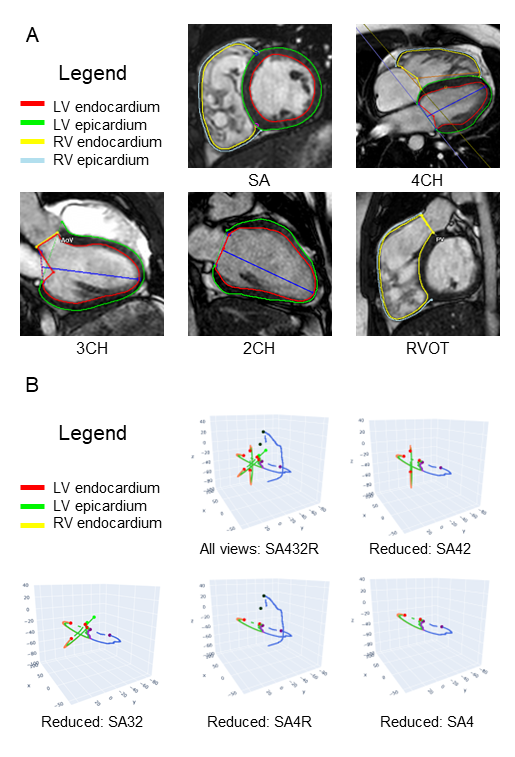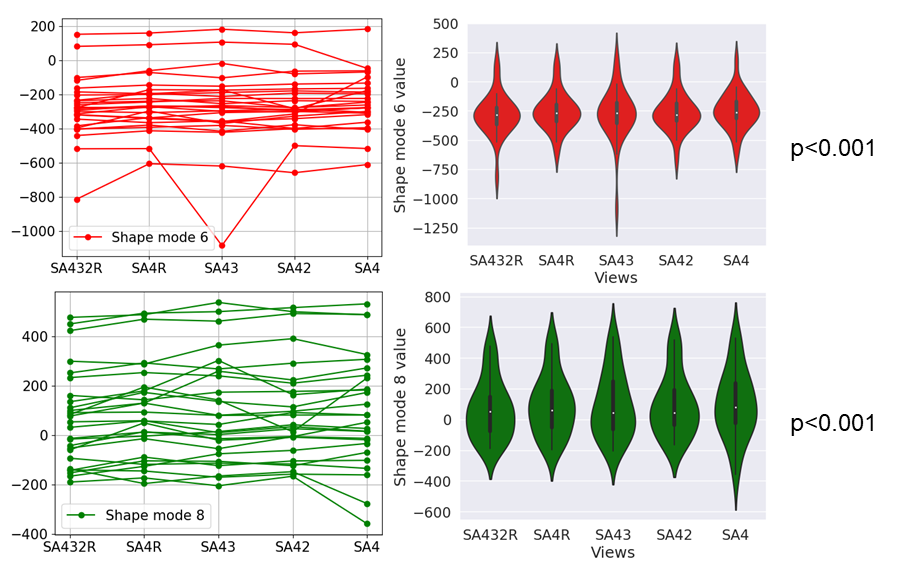Rapid Fire Abstracts
How much is enough?: Effect of cardiac views on adverse shape mode evaluation in repaired Tetralogy of Fallot (RF_SA_492)
- HL
Hoa Le, MSc, BSc
PhD Candidate
Cardiovascular Innovation Research Center, Heart Vascular Thoracic Institute, Cleveland Clinic, Cleveland, OH, United States. Department of Biomedical Engineering, Case Western Reserve University & Cleveland Clinic, Cleveland, OH, United States. - CD
Camille Diaz-Garcia, BSc
Medical Student
Case Western Reserve University School of Medicine - LD
Lifu Deng, PhD
Data Scientist
Cleveland Clinic - GM
Grace C. McDermott, BA
Medical Student
Case Western Reserve University School of Medicine - AS
Ansh Shah, BA
Undergraduate Student
Case Western Reserve University - AN
Anastasia Nasopoulou, PhD, MSc, BMSc
Research Associate
King's College London, United Kingdom - TK
Tara Karamlou, MD, MSc
Professor of Surgery
Cleveland Clinic - KZ
Kenneth Zahka, MD
Professor of Pediatrics
Cleveland Clinic Children's 
Tarique Hussain, MD, PhD
Professor
UT Southwestern
Alistair A. Young, PhD
Professor
King's College London, United Kingdom
Christopher Nguyen, PhD, FSCMR, FACC
Director, Cardiovascular Innovation Research Center
Cleveland Clinic
Animesh Tandon, MD, MS
Director of Cardiovascular Innovation
Cleveland Clinic Children's
Animesh Tandon, MD, MS
Director of Cardiovascular Innovation
Cleveland Clinic Children's
Primary Author(s)
Co-Author(s)
Presenting Author(s)
Co-Author(s)
Adverse ventricular shape modes have been previously shown to be associated with adverse events in repaired tetralogy of Fallot (rTOF),1 the most common form of cyanotic congenital heart disease. These shape modes are initially derived from endocardial and epicardial contours and valvar landmarks drawn on cines in various geometries.2 However, it is unclear whether adding more views affects shape mode scores for the complex ventricular geometry in rTOF. We aimed to evaluate changes in shape mode scores based on the CMR views used. Our long-term goal is to optimize the shape modeling methodology and facilitate its implementation in the clinical setting.
Methods:
Clinical and research CMRs from patients with rTOF were contoured, with left- and right- ventricular (LV, RV) endocardial and epicardial contours, as well as LV apex, and insertion of aortic, pulmonary, mitral, and tricuspid valves, in SA, 4CH, 3CH, 2CH, and RVOT views (Figure 1 Panel A). Biventricular geometric meshes were then created for each patient to characterize the variations in shapes with all 5 views, or with 1-3 views removed (Figure 1 Panel B). Two previously shown adverse shape modes were then calculated from the resultant meshes, highlighting the eccentricity of the LV base (mode 6) and increased LV sphericity and RV eccentricity at the base (mode 8).1 The Friedman statistical test (for non-parametric repeated measures) was conducted to assess whether the resulting shape modes come from different distributions.
Results:
27 patients were included, with demographics in Table 1. Shape modes 6 and 8 had significantly different scores (p< 0.001) based on the views included. Further, the largest score difference was seen between the scores for all 5 views (SA432R) and the smallest combination of 2 views (SA4). This result reinforces the hypothesis that shape scores in rTOF are affected by the underlying views included, and therefore multiple views should be included in shape mode workflows.
Conclusion: Inclusion of different sets of contours from CMR cine views significantly affected adverse shape mode scores in patients with rTOF. In the future, we plan to analyze this view removal affects the shape modes’ ability to evaluate adverse events in rTOF.
Figure 1. Shape Generation Workflow. Panel A – Example contours drawn for different cine views/geometries from a patient with repaired tetralogy of Fallot (rTOF). Short Axis (SA), 4-Chamber (4CH), 3-Chamber (3CH), 2-Chamber (2CH), Right Ventricular Outflow Tract (RVOT). Panel B- Biventricular geometric mesh landmarks with full view and reduced views. Short Axis (SA), 4CH (4), 3CH (3), 2CH (2), RVOT (R).
Figure 2. Shape mode 6 and 8 scores based on included views/geometries. Individual patient scores (left) and violin plots (right) for shape mode 6 (top) and shape mode 8 (bottom). There were statistically significant differences in the shape mode scores for both mode 6 and 8 (p < 0.001) depending on which views were included in the analysis.

